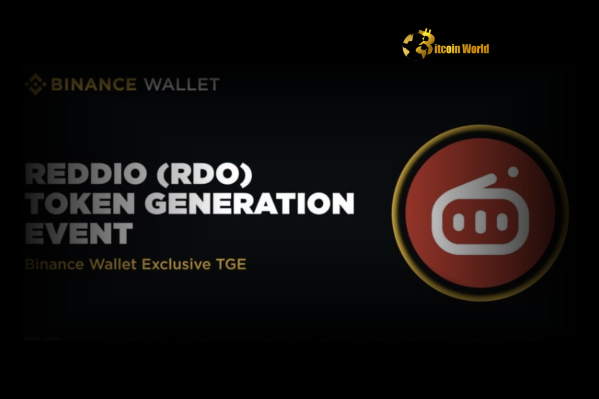BitcoinWorld

AI Job Loss: Anthropic’s Bold Move to Tackle AI’s Economic Future
In the dynamic world of innovation, where advancements often outpace foresight, the conversation around artificial intelligence’s impact on our economic future is rapidly gaining momentum. Just as the crypto community grapples with decentralization and its ripple effects, the tech sector is now confronting the profound shifts brought by generative AI. While many foresee new opportunities, the looming specter of widespread AI job loss demands serious attention. This is precisely the challenge Anthropic, a leading AI research company, is stepping up to address with its groundbreaking Economic Futures Program.
Understanding the AI Job Loss Debate
The rise of generative AI has sparked intense debate about its economic consequences. On one hand, Silicon Valley champions the creation of new career paths and unprecedented economic growth, envisioning a future where AI boosts GDP significantly. However, a less optimistic view anticipates that these gains might not be evenly distributed, leading to considerable job displacement across various sectors. This concern is not unfounded, with prominent figures like Anthropic CEO Dario Amodei predicting a significant impact.
- Amodei’s Stark Prediction: In May, Dario Amodei suggested that AI could eliminate up to half of all entry-level white-collar jobs.
- Potential Unemployment Spike: His forecast included a potential rise in unemployment to as high as 20% within the next one to five years.
These predictions highlight the urgency for proactive measures, moving beyond mere speculation to evidence-based understanding of what lies ahead for the global workforce.
Anthropic AI’s Proactive Stance on AI Economic Impact
Amidst this backdrop of both promise and peril, Anthropic AI has launched its Economic Futures Program. This new initiative is designed to support rigorous research into AI’s multifaceted impacts on the labor market and the broader global economy. The program’s core aim is to develop well-informed policy proposals that can help societies prepare for the significant economic shifts AI will inevitably bring.
Sarah Heck, head of policy programs and partnerships at Anthropic, emphasized the program’s commitment to objectivity. “Everybody’s asking questions about what are the economic impacts [of AI], both positive and negative,” Heck told Bitcoin World. “It’s really important to root these conversations in evidence and not have predetermined outcomes or views on what’s going to [happen].”
The program seeks to understand the full spectrum of change, acknowledging that AI’s disruptive potential can lead to both beneficial and challenging outcomes. Whether it’s widespread job loss requiring mitigation strategies or massive GDP expansion necessitating new policy frameworks, the goal is to gather data and convene thinkers to address these scenarios comprehensively. This comprehensive approach is crucial for understanding the true AI economic impact.
Navigating the Future of Work AI: Program Pillars
Anthropic’s Economic Futures Program is structured around three key pillars, each designed to contribute to a deeper understanding and preparedness for the evolving economic landscape shaped by AI. This multi-pronged approach aims to provide actionable insights for the future of work AI.
- Research Grants: The program will provide grants to researchers investigating AI’s effect on labor, productivity, and value creation. Anthropic has opened applications for rapid grants of up to $50,000 for empirical research on AI’s economic impacts, emphasizing the need for high-quality data within a six-month timeframe.
- Policy Forums: Creating platforms for developing and evaluating policy proposals to prepare for AI’s economic impacts is another crucial aspect. This includes Anthropic-hosted symposia events in Washington, D.C., and Europe, inviting a wide variety of intellectual perspectives beyond just labor market considerations.
- Dataset Building: A fundamental pillar involves building robust datasets to track AI’s economic usage and impact over time. This builds on Anthropic’s existing Economic Index, launched in February, which open-sources aggregated, anonymized data—a significant move given that many competitors keep such data proprietary.
Anthropic is also actively seeking partnerships with independent research institutions, offering Claude API credits and other resources to support collaborative research efforts. This collaborative spirit aims to broaden the scope of inquiry, exploring how workflows transform, how new jobs emerge, and how certain skills retain or lose value in the AI era. The program also intends to study AI’s effects on fiscal policy, opening the aperture on a much broader swath of potential impacts.
AI Labor Market Insights: Anthropic vs. OpenAI
While Anthropic is focusing heavily on researching and mitigating potential negative impacts, its rival, OpenAI, has outlined a somewhat different approach in its own Economic Blueprint, released in January. This comparison offers valuable insights into differing industry philosophies concerning the AI labor market.
- OpenAI’s Focus: OpenAI’s blueprint centers on helping the public adopt AI tools, building robust AI infrastructure, and establishing “AI economic zones” to streamline regulations and promote investment. Their Stargate project, for instance, aims to create thousands of construction jobs through data center development.
- Addressing Job Loss: While OpenAI’s blueprint doesn’t directly address AI-related job loss in the same explicit manner as Anthropic, it outlines frameworks for government involvement in supply chain training pipelines, investing in AI literacy, supporting regional training programs, and scaling public university access to compute resources to foster AI-literate workforces.
Anthropic’s program, therefore, represents a growing trend among some tech companies to take responsibility for the disruptions they create. This shift, driven by a mix of reputational concern and genuine altruism, reflects an evolving understanding of corporate social responsibility in the age of rapid technological advancement. Just as ride-hail companies like Lyft are now engaging human drivers as they integrate robotaxis, AI developers are beginning to actively involve themselves in shaping the societal outcomes of their innovations.
A Proactive Step Towards an Uncertain Future
Anthropic’s Economic Futures Program is a crucial step towards understanding and preparing for the complex economic landscape AI is forging. By prioritizing evidence-based research, fostering policy dialogue, and building transparent datasets, Anthropic is not just predicting the future but actively working to shape it responsibly. This proactive engagement is vital as societies navigate the opportunities and challenges presented by artificial intelligence, ensuring that the benefits of this powerful technology are broadly shared, and its potential disruptions are thoughtfully managed. It’s an investment in a more informed and equitable transition into the AI-driven economy.
To learn more about the latest AI labor market trends, explore our article on key developments shaping AI features and institutional adoption.
This post AI Job Loss: Anthropic’s Bold Move to Tackle AI’s Economic Future first appeared on BitcoinWorld and is written by Editorial Team





